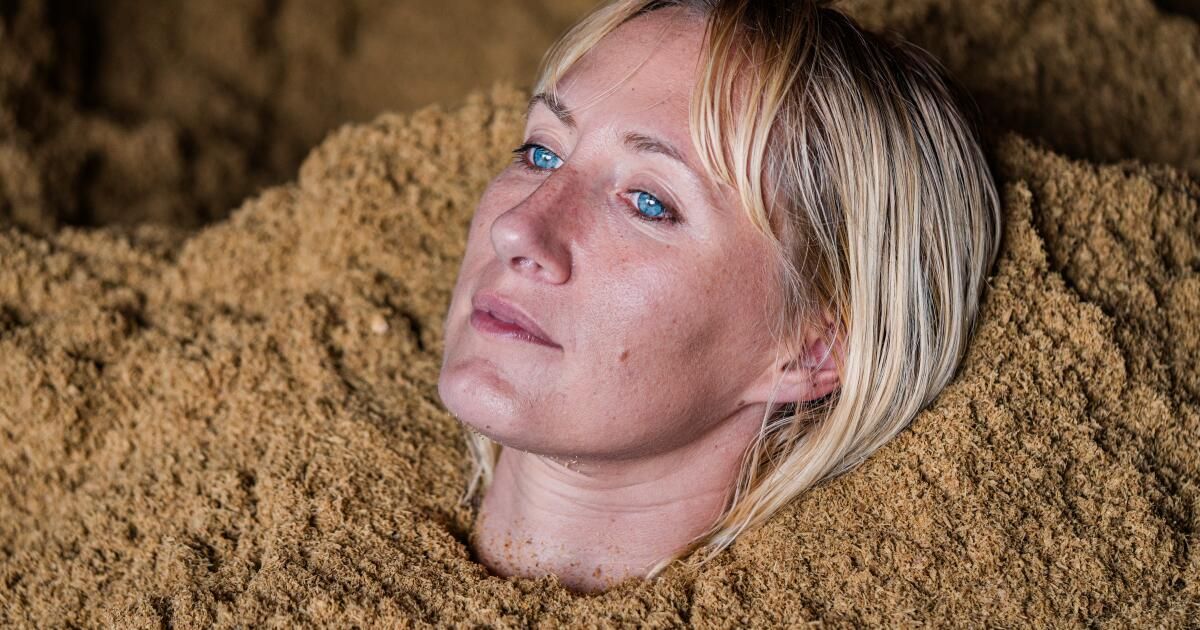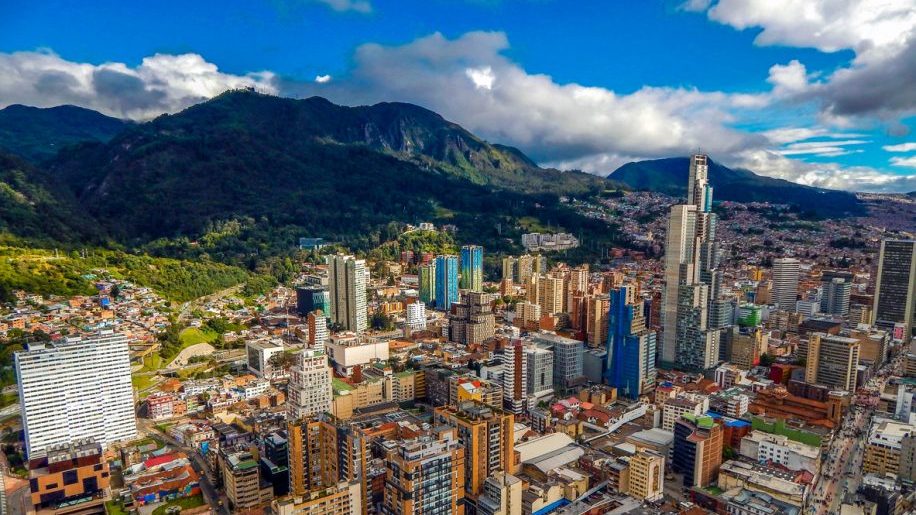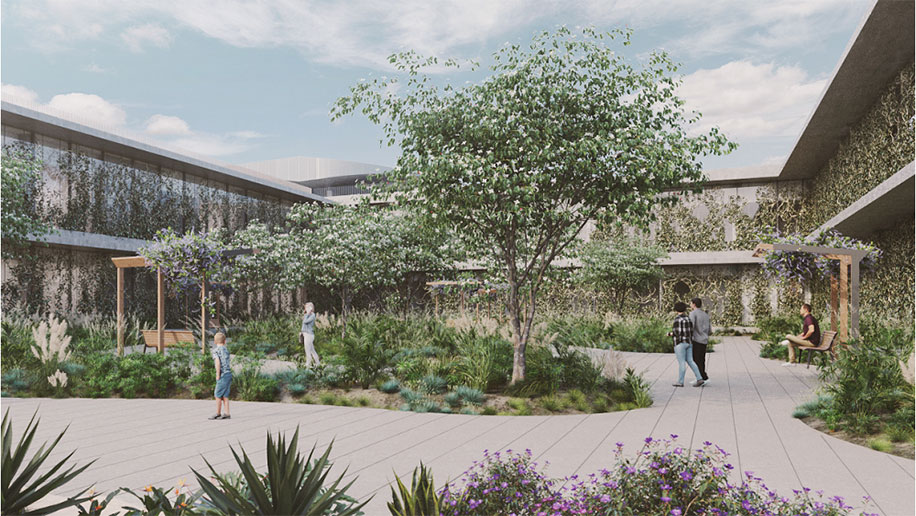Before our appointment in Spa sanctuary of the day of osmosisA peaceful retreat from the Winery Road in West Sonoma County, a friend and I appeared in a nearby gift shop. We told the owner that we were destined to prove the historical treatment of osmosis, a so -called “cedar enzyme bath”, and his eyes opened with emotion.
“You will feel that you are a plant that is being composed,” he said, adding that the spa recycled bath materials aligned in the path of a neighboring garden.
When we finally took the costumes ordered from osmosis to nudity, I smelled what he meant before seeing it. A damp and earthy smell hung in the air, as if the mounds of fresh chips had dispersed by a recently excavated farm plot.
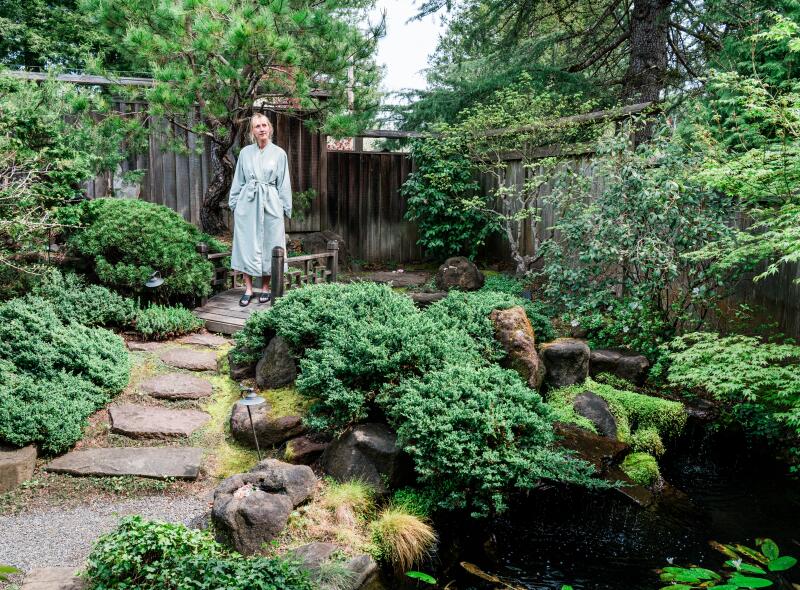

The meditation garden in the Sanctuary of Spa on Osmosis Day.
It is the exclusive aroma of a spa whose marquee treatment implies being covered to the neck in a steaming compost box. Known in Japan as an ion bath, it combines many spa treatments in one: a heated and heavy sensation to relax and calm the body and a soothing aromatherapy to picket the senses. Very similar to Callistoga mud bathsThe experience is both a novel brush with natural elements and an opportunity for its launch.
“I like to say that what is happening there is a fundamental impulse in biology,” said Osmosis owner Michael Stusser. “All these microorganisms have the opportunity to talk to each other. Everyone has an infinite wisdom. Everyone communicates. So this energy is happening. There is a complete flow.”
-
Share by
Stusser estimates that osmosis has placed compost in half a million guests in their 40 years of business. During much of that time, it was the only place in North America where you could constantly reserve an cedar enzyme bath, currently with a price of $ 155 per person or $ 127.50 per person for a shared VAT of two people. (In May 2023, Tahoe Bosque Baths Opened at Lake Tahoe and began offering them in association with the Japanese company Ohtaka Enzyme Co. although Willow Spa from Santa Monica Once cedar enzymatic baths were given, this service has decontinated). Now the 5 acres spa in Creekside is expanding its offers, which include sound therapy sessions in zero serious sun loungers, meditation workshops and withdrawals all day.

The Healdsburg resident, Simone Wilson, and the welfare editor, Alyssa Bereznak, in an enzymatic cedar bath in Osmosis Day Spa. Warm and fragrant treatment originated in Japan.
(Andri also / for times)
The smell that permeates the corridors of osmosis is the byproduct of a very intentional process, said Stusser. Enzymatic bathing is a mixture of fragrant fragrant fragrants by Douglas Fir and Port Orford (a tree that the native Karok people of the northwest of California once used to build sweat accommodations) and rice bran, which activates the composting process.
“There are literally billions of organisms that feed on nitrogen and generate heat with their bodies, breaking carbon,” Stusser said. “That's what they do.”
The spa staff is responsible for preventing the mixture from becoming hygienically doubtful both replacing it and stirring it several times a day, ensuring that there is enough oxygen to maintain that moving activity. We observe the process before our personal meeting with the mulch. Our spa wizard for the day, Samundra Sutcliffe, housed a large strip in the Thave chips and delivered it on top of itself while the steam emanated from the stack.

The Samundra Sutcliffe wizard shakes the cedar enzyme chips in the Osmosis Day Sanctuary.
(Andri also / for times)
“If you don't fly enough, the material begins to compact and begins to break down, what is called anaerobically, which is without oxygen,” said the general manager of the SPA, Heather Bishop. “Sometimes we will end with less attractive odors.”
Stusser, 78, has a deep education in biodynamic gardening. He studied agroecology at the University of Santa Cruz under the pioneer of gardening and agriculture of the gardening Alan Chadwick, who founded the “intensive in French” garden of the school in 1967. (Stusser went to film A 1971 documentary“The garden”, on the project). As Stusser got more into the scene of biological gardening, he was in love with compost.
“I saw the alchemical power of compost to transform not only the ground, but everything that was put in it,” he said. “And I had a secret desire that I was never willing to admit anyone, which should be buried in a compost pile.”
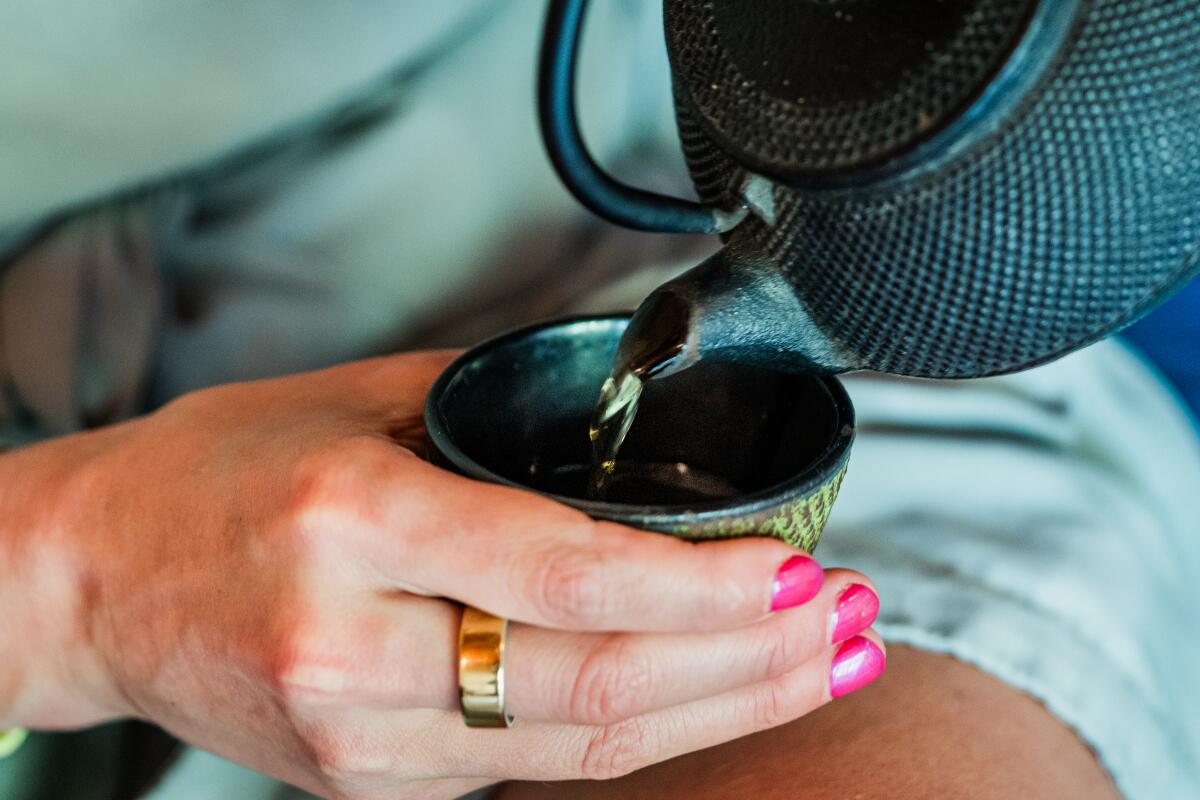
The osmosis serves a special tea with enzyme infusion before guiding guests to their signature cedar enzyme baths.
(Andri also / for times)
After living and attending the Earth in the rural center of the Farallones Institute (now the Western Arts and Ecology Center in Sonoma County), Stusser traveled to Japan in 1981 to become an apprentice of landscape gardening. The program, a routine seven days a week-tile-dusk, proved to be too intense, so he resigned and went to live in a Zen temple in Obama-Shi. Stusser developed a serious sciatic case and was a search to heal. He ended on the island of Kyushu, where he ran into an enzymatic bathroom where people of different ages and ailments had come to heal.
“As soon as I saw what was happening, I realized that this is actually the same dynamic that exists in the compost,” Stusser said. “I said, I will finally get my wish. “
A farmer in the southwest of Hokkaido called Noboru Ohtaka came up with the idea of a so -called “ion bath” after stepping on an enzymatic sawdust fertilizer that had developed and noticed that he felt pleasant. His company, Ohtaka Enzyme Co., opened his first ion house in the city of Sapporo in 1964, said company president Seiichi Imai. Seven years later, when the city was the host of the Winter Olympic Games, the organizers built enzymatic baths so that the athletes use them in the Olympic village.
“As the installation appeared continuously in the newspapers and on television, the concept of the enzymatic bath was extended by Japan,” Imai shared in an email.
Enzymhe Bath's Bath Stusser was consistent with the original practice. He participated in the treatment twice a day for a week, during which he fasted to save an enzymatic drink, and received Ashiatsu massages (in which a practitioner walks on his back). He said the treatment resolved his sciatica. He also had a spiritual experience.
“I was in the enzymatic bath and, as part of that experience, as in millisecond of this vast experience, I saw that all the creation of osmosis was developed before the eye of my mind in an instant, crystalline, undeniable, and I knew it was my call to do this,” he said.
He returned to the United States and got to work. On May 21, 1985, osmosis opened. At first, he said, it was difficult to persuade people to live the same desire to be composted he had retained for so many years.
“I could barely give it to the beginning,” he said. “But once they did and discovered how much better made them feel, we have had many people who come for decades.”
While my friend and I sat down with tunic in a tea room looking at a glass door that opened to a private Zen garden and drinking a hot enzymatic herbal tonic with tickets, red and mint clover, I contemplated my imminent encounter with the compost. I am an avid gardener who has dusted my plants with compost and made his own kombucha. But I even felt a drip of doubting it for being suffocated in a mulch loaded with bacteria.
Before I could think twice, our assistant, Samundra, led us to a separate room with what looked like a sand box for adults. Two human size seats had been carved in the enzyme cedar mixture to ensure that we had enough support while looking at another private Zen garden. We are briefly alone to establish and cover ourselves in the mixture. When he entered again, he began to move him both until only our heads were visible.
“If you get over too much, you can always get your arms, and I will only go see you,” he said.
Undering and personal, the smell musk dissipated, and breathed in the spice of ground connection and the energetic citrus notes of Douglas's fir. It felt as if my body was wrapped in a hot compress. I tend to overheat easily in jacuzzis and hot springs, but the enzymatic bath was breathable. (Later I learned that this is because the wood has a lower thermal conductivity than water, and the mixture of cedar enzymes allows more aeration).
When my friend and I started to sweat, Samundra arrived with cold compresses and covered them in the neck. With our arms still buried under the compost, she brought frozen waters with straws to the mouth so that we could hydrate, a truly luxurious part of the service.
The 20 minutes assigned were quickly. And when our time ended, she got us enough to get rid. We use special grated gloves to clean the mixture of our bodies in the private Zen garden, then we rinse in the shower. My body was heated from the inside, my back and shoulders typically tight and color, slack and painless. After a trip to a spa, sometimes I can feel that I am on the verge of a nap, but in this case I felt vigorized and present, ready to travel the gardens that were waiting outside.
When I then transmitted my skepticism trip to turn Stusser, he said it was common.
“You really can't explain it to someone until you have done it,” Stusser said. “Many people will be very inquisitive by phone. They go, 'Well, can you tell me something else about what you are really doing?' Then they get here and look at him, and they are not even sure they want to enter.
It was true. I had been composted like a plant, and I liked it.

